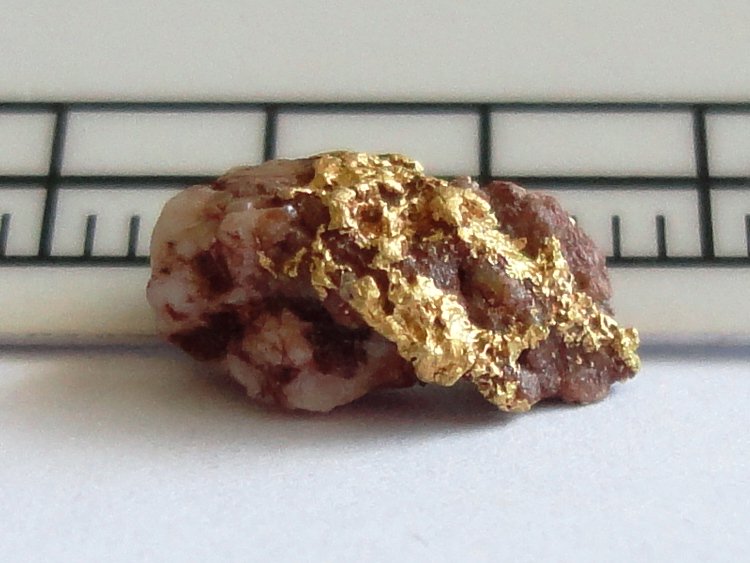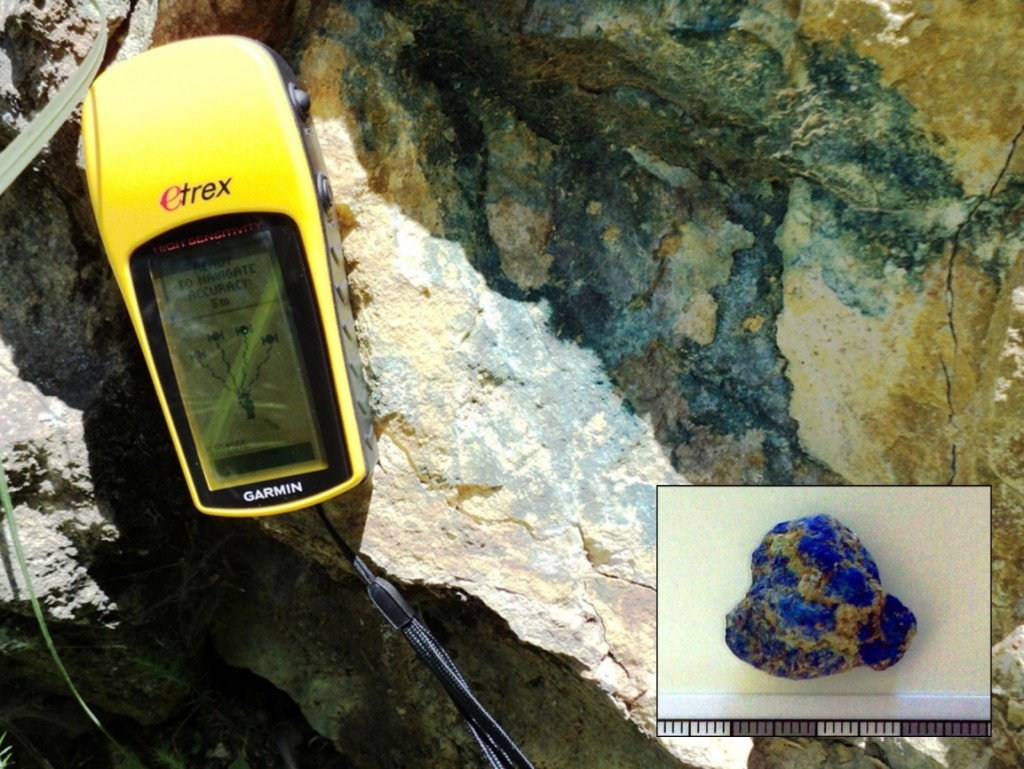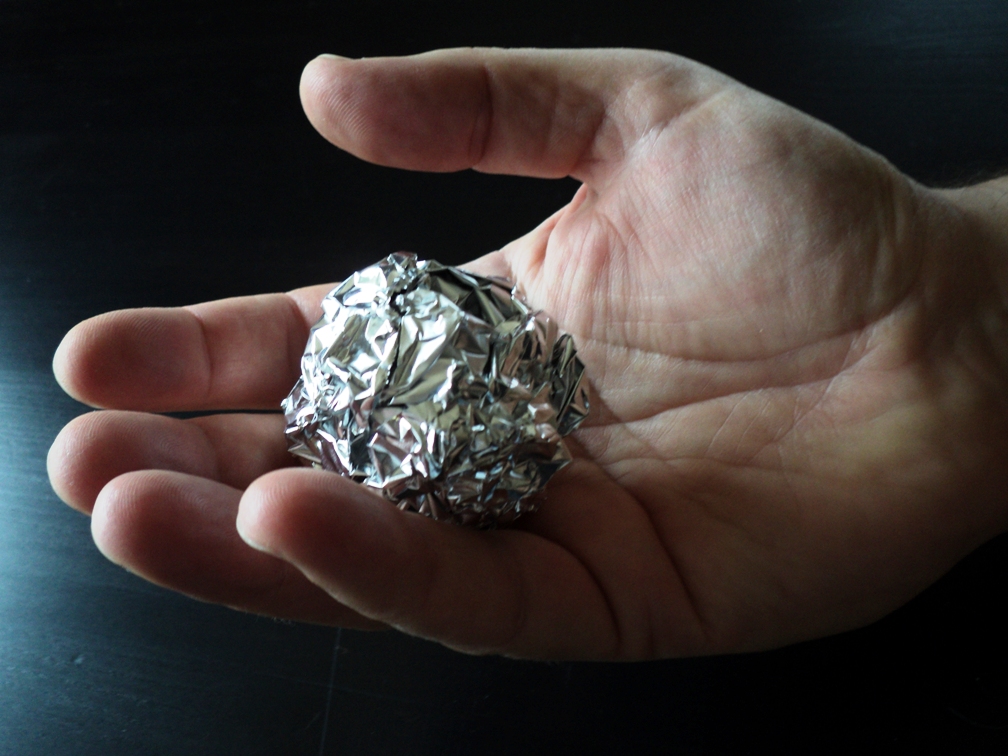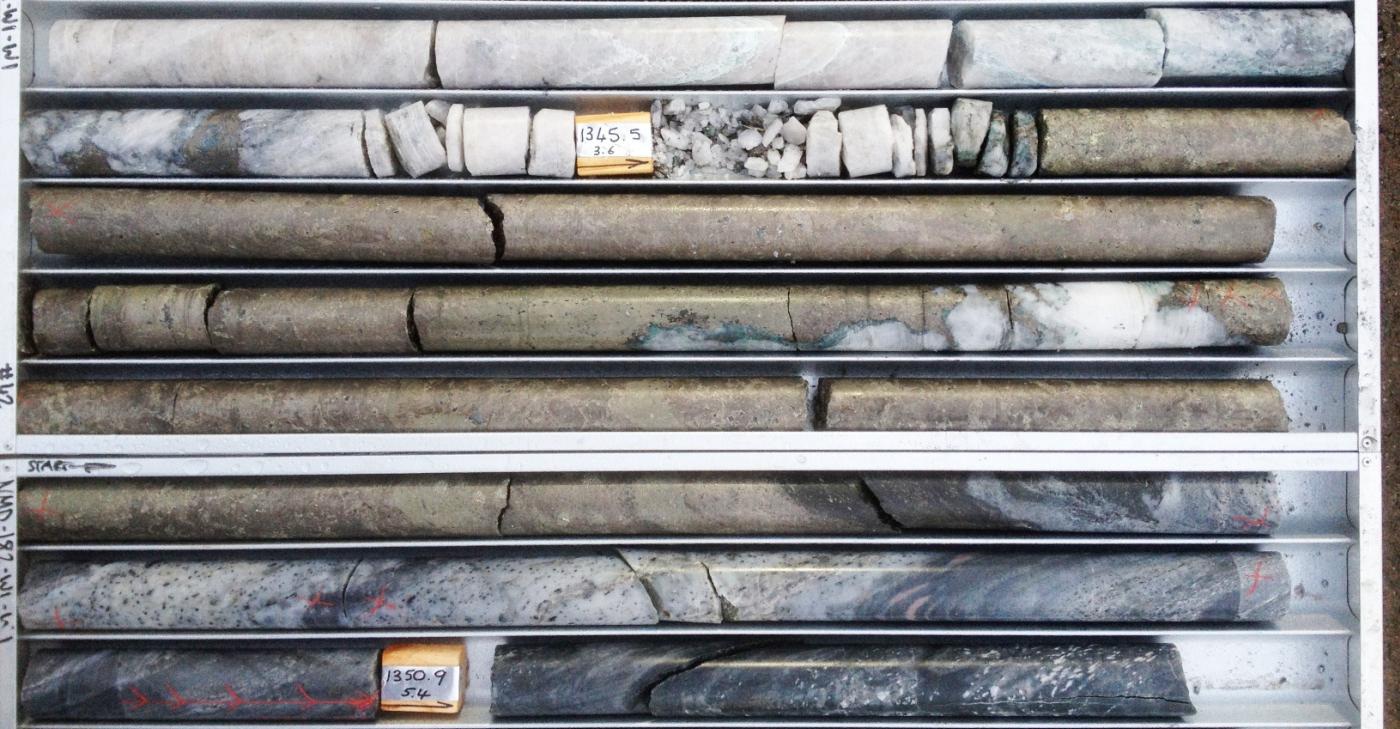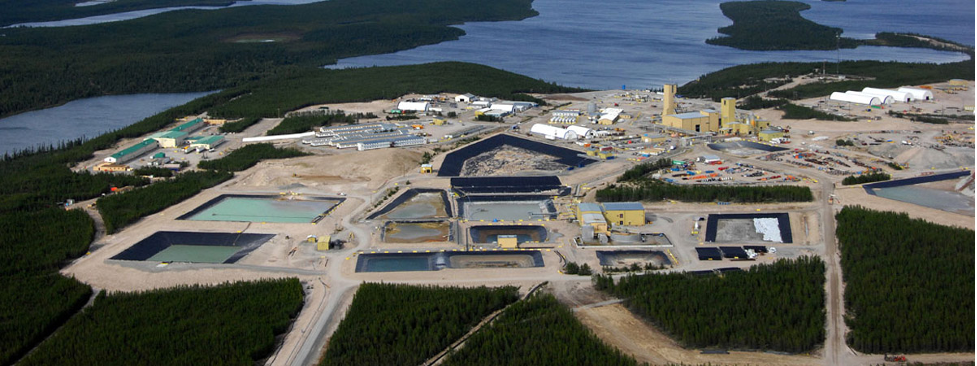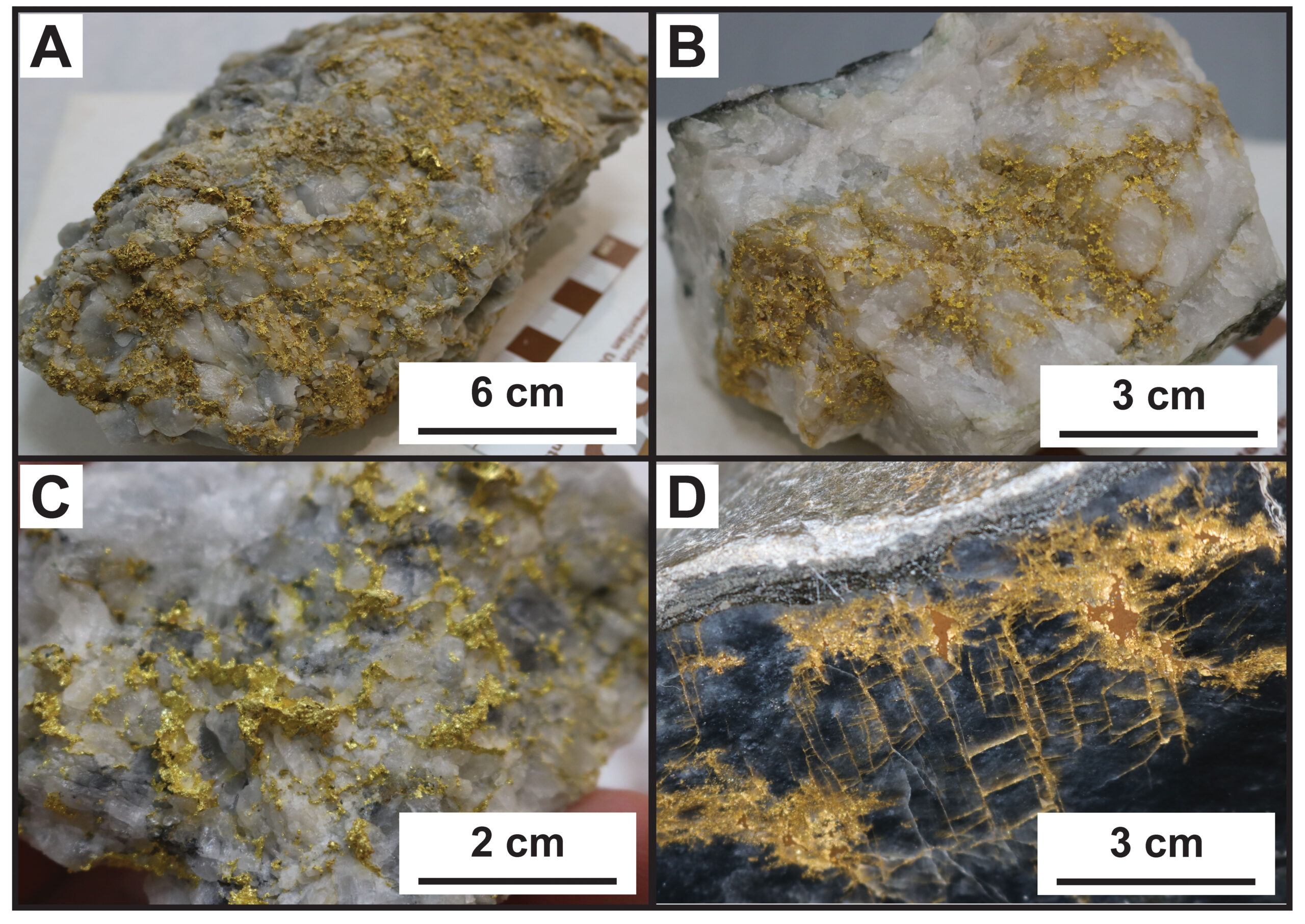Iron is number 26 on the periodic table of the elements. Iron has the symbol Fe, which is an abbreviation of ferrum; the Latin word for iron.
From studying iron-nickel meteorites, which are just broken up bits of minor planets, scientists have deduced that the Earth’s core is probably made of iron and nickel too.
Pure iron has a density of nearly 8 times that of water, with a melting point of 1538°C. Pure iron is relatively soft. It can be even softer than aluminium when pure. However, it is quite difficult to make pure iron using the normal smelting process. Impurities alloyed with iron, especially carbon, make iron significantly harder. Steel is just a form of impure iron where the carbon content was been carefully adjusted.
Iron is the fourth most common element in the Earth’s crust after oxygen, silicon, and aluminium. By weight, the Earth as a whole contains more iron than any other element; most of which is below the crust in the inner and outer core. We know this because scientists have calculated the mass of the earth from gravity calculations and its volume from knowing its circumference. From this, the density of the Earth was calculated to be 5 ½ times that of water. Measurements of crustal rock are nowhere near that dense. To make up for this shortfall the core must be made of a much dense material such as metal. From studying iron-nickel meteorites, which are just broken up bits of minor planets, scientists have deduced that the Earth’s core is probably made of iron and nickel too.
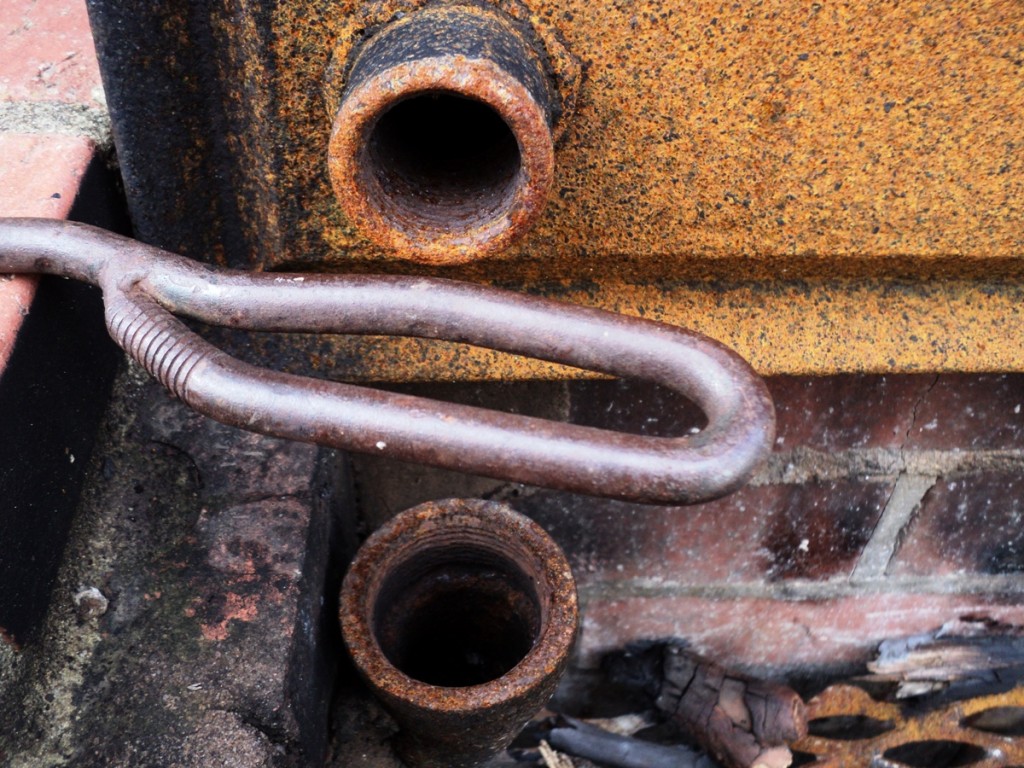
On freshly exposed surfaces, iron has a silver-grey metallic lustre. However, before long on exposure to damp air, the surface of iron oxidises to hydrated iron oxides or rust. The corrosion products of iron occupy a much larger volume than iron itself so they tend to swell and flake off. This has the effect of exposing more fresh iron to air and water, which encourages more rust to form. Eventually, given enough time, bulk corrosion of the iron occurs resulting in just a pile of loose rust.
What Are The Main Uses Of Iron?
The main use for iron is the production of cast iron and various types of steel, including stainless and other special steels. Wrought iron which has a low carbon-content was once extensively used but has now been superseded by mild steel. The amount of carbon in steel governs its final properties. Generally, the more carbon added, the harder and more brittle the steel becomes. Carbon contents in steel range from negligible amounts to around two percent.
In addition to its metallurgical uses, various compounds of iron are used throughout industry. Also, it is generally well known that adequate levels of iron in our diet are required to avoid some forms of anaemia.
How Are Iron Ore Deposits Formed?
Vast sedimentary iron-rich deposits were laid down between 1.9 and 2.4 billion years ago during the latter part of the Precambrian period, known as the Proterozoic era. These deposits exhibit strong layering and are known as banded iron formations, or BIFs. These were formed at a time in geological history when the surface of the Earth switched from being a reducing environment to an oxidising one. This occurred around the time oxygen producing blue-green algae, thrived in the oceans of the earth. Free oxygen produced by these organisms reacted with dissolved iron in sea water causing iron oxides such as magnetite and hematite to settle on the seafloor. Multiple layers of iron-rich sediment were laid down over thicknesses of hundreds of metres. Eventually all of the iron available had reacted with the algae created oxygen, after which any free oxygen then escaped into the atmosphere. We can thank the algae for the oxygen-rich atmosphere we breathe today. Unfortunately for the anaerobic organisms, their widespread reign on Earth ended around this time and now they only survive today in niche environments.
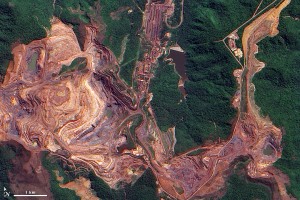
Hematite ore forms from either deep weathering or hydrothermal alteration of primary banded iron formations where all of the magnetite is converted to the minerals hematite and goethite. This process naturally increases the grade of the ore. The ore is known as “direct shipping hematite” because it requires no further concentration before smelting.
When magnetite is replaced by hematite whilst preserving the original crystal shape of magnetite, the material is called martite.
Magnetite ore is extracted from unaltered and unweathered zones within banded iron formations. It usually lies
beneath the direct shipping hematite ore, so deeper mining is required to extract it. Magnetite is processed by fine grinding of the ore followed by magnetic separation to concentrate the magnetite and remove impurities such as quartz. Magnetite deposits are relatively easy to find using regional aeromagnetic images as they stand out well from surrounding non-magnetic rock. However, as usual, drilling is required to obtain samples for grade determinations.
Channel iron deposits are alluvial deposits formed by the weathering and erosion of banded iron formations and the transportation of material off higher slopes down into the valleys and along drainage channels. Such material has undergone the same type of weathering that produces direct shipping haematite ore, so it too tends to be of high grade.
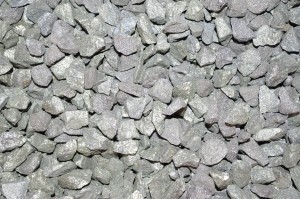
Iron ore deposits may also form by the cooling of hot molten rock or magma with the settling out of magnetite crystals. Deposits formed this way can be by injection of magma into large underground chambers or by extrusion of lava onto the earth’s surface. Other minor but high-grade deposits called skarns can form at the contact between two adjacent rock types, such as a banded iron formation and a limestone.
It should be noted that while many base metal and precious metal deposits are rich in iron, that iron is usually in the form of sulfides like pyrite or pyrrhotite from which the iron cannot be economically extracted.
Where Is Iron Found?
China, Australia and Brazil are the largest producers of iron ore in the world. In China, about half of iron ore production comes from the Hebei and Liaoning Provinces from vast magnetite-rich deposits. In Australia, the majority of iron ore mined comes from banded iron formations in the Pilbara region of Western Australia and on the Eyre Peninsula of South Australia. Vale’s Carajás Mine in Brazil is the largest iron mine in the world with vast iron formations and accessory gold, copper and nickel.

